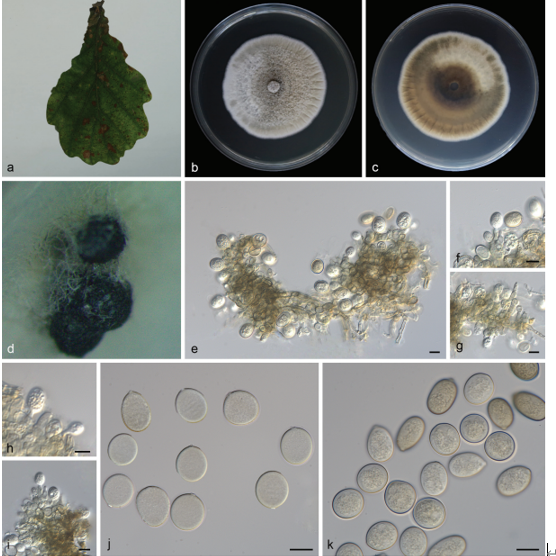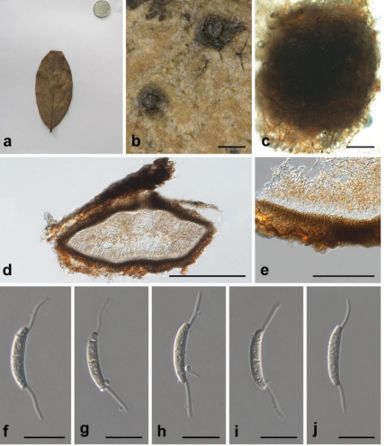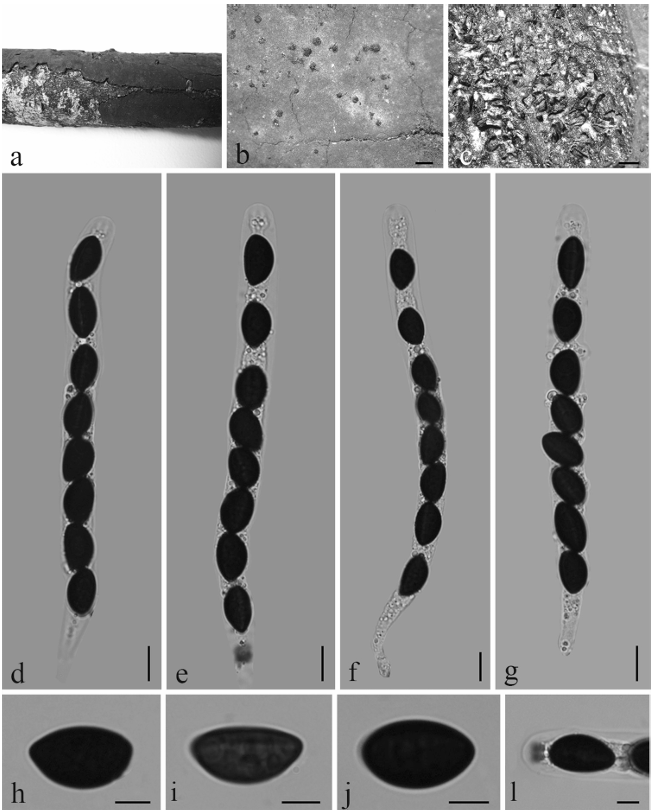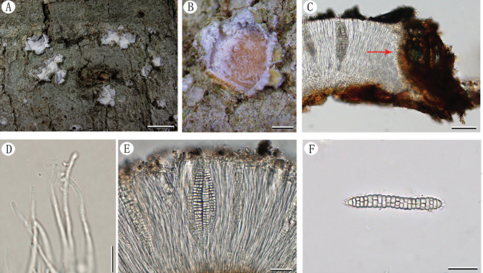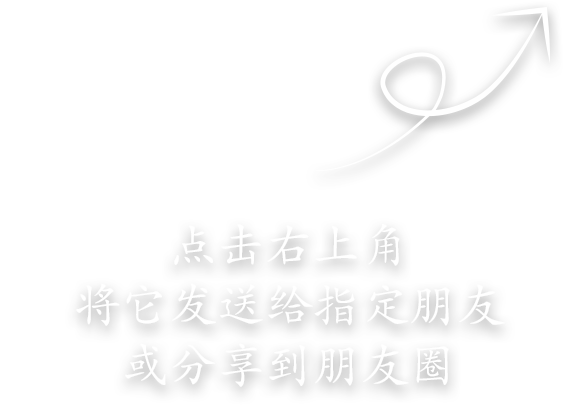Beltraniella brevis C.G. Lin, Jian K. Liu & K.D. Hyde, sp. nov. 2020
Index Fungorum Number: IF556729; Facesoffungi number: FoF06219
Holotype: China, Guizhou Province, Qiannan Buyi Miao Autonomous Prefecture, Dushan County, Guizhou Zilinshan National Forest Park (Shengou District), unnamed road, on decaying leaves, 6 July 2018, Chuan-Gen Lin, DS 2-21 (MFLU 19–2254, holotype); ibid., HKAS 105159, isotype); ex-type living culture GZCC 18–0081; ibid, DS 2-23 (MFLU 19–2253, paratype, HKAS 105160, isoparatype); ex-paratype living culture GZCC 18–0082.
Morphological description
Saprobic on decaying leaves. Sexual morph: Undetermined. Asexual morph: Colonies on plant substrate effuse, thin, pale brown. Mycelium mostly immersed in the substratum. Setae numerous, erect, arising from radially lobed basal cells, straight or flexuous, unbranched, single or in small groups, thick-walled, verrucose, dark brown, 89–251 μm long, 4.5–10.5 μm wide at the base, tapering to a pointed apex, arising from a dark brown, swollen, radially lobed basal cell, 15.5–
27.8 μm diameter, imperfect setae single, straight, septate, verrucose, thick-walled, dark brown at the base and paler at the apex, up to 310 μm long, swollen at the base, slightly tapering to a pointed apex. Conidiophores macronematous, short, simple or branched, septate, sometimes reduced to conidiogenous cells, smooth-walled, swollen at the base, subhyaline to pale brown, thin-walled, arising from basal cells of setae or from separate, 6–16 μm long, 3.7–7 μm wide. Conidiogenous cells polyblastic, integrated, determinate, terminal, ampulliform, cylindrical, oblong, hyaline to subhyaline, smooth, 4.9–13.7 µm (x̄ = 8.3 μm, n = 29) long, 3.5–6.8 µm (x̄ = 5.3 μm, n = 29) wide at the base. Separating cells fusiform, thin-walled, smooth, hyaline to subhyaline, 1-denticulate at each end, 11–18 µm long, 3.4–4.1 µm wide in the broadest part. Conidia arise directly from conidiogenous cells or from separating cells, aggregated, acrogenous, simple, dry, straight, smooth, thin-walled, turbinate to pyriform, rostrate to pointed at proximal end, truncate at distal end, hyaline with a hyaline supraequatorial transverse band, 20–26.5 µm (x̄ = 22.3 μm, n = 30) long, 4.5–7.2 µm (x̄ = 5.9 μm, n = 30) wide in the broadest part.
Habitat: on decaying leaves
Distribution: China
GenBank Accession: ITS MN252876, MN252877 ;LSU MN252883, MN252883
Notes: Beltraniella brevis is most similar to Bel. portoricensis in having straight, verrucose setae and short non-setiform conidiophores arising from radially lobed basal cells, polyblastic conidiogenous cells, swollen separating cells, and turbinate, appendiculate conidia (Pirozynski 1963, Shirouzu et al. 2010). However, Bel. brevis differs from Bel. portoricensis by its hyaline conidia, whereas conidia are subhyaline to dilute yellow-olive in Bel. portoricensis (Pirozynski
1963, Shirouzu et al. 2010). In the tree generated from maximum likelihood analysis based on a combined LSU and ITS sequence data (Fig. 154), Bel. brevis grouped together and formed a monophyletic group with 96% ML bootstrap support and 100% Bayesian posterior probabilities within Beltraniella.
Reference: Hyde KD, de Silva NI, Jeewon R et al. 2020 – AJOM new records and collections of fungi: 1–100. Asian Journal of Mycology 3(1), 22–294, Doi 10.5943/ajom/3/1/3 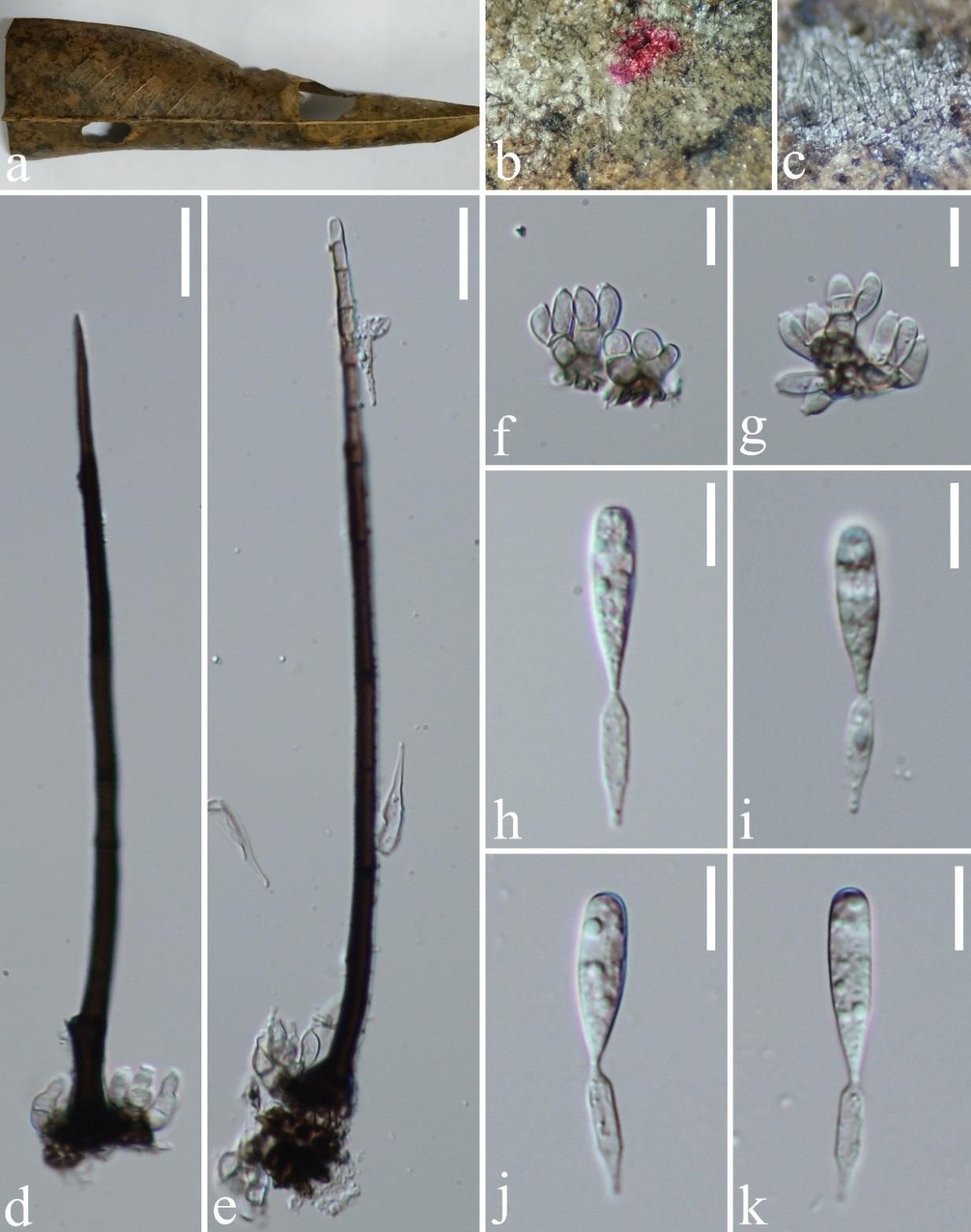
Beltraniella brevis (MFLU 19–2254, holotype). a Host material. b Conidiophores on leaf surface. c Setae with short conidiophores. d Imperfect setae. e, f Conidiogenous cells. g–j Conidia with separating cells. Scale bars: c, d = 20 μm, e–j = 10 μm. 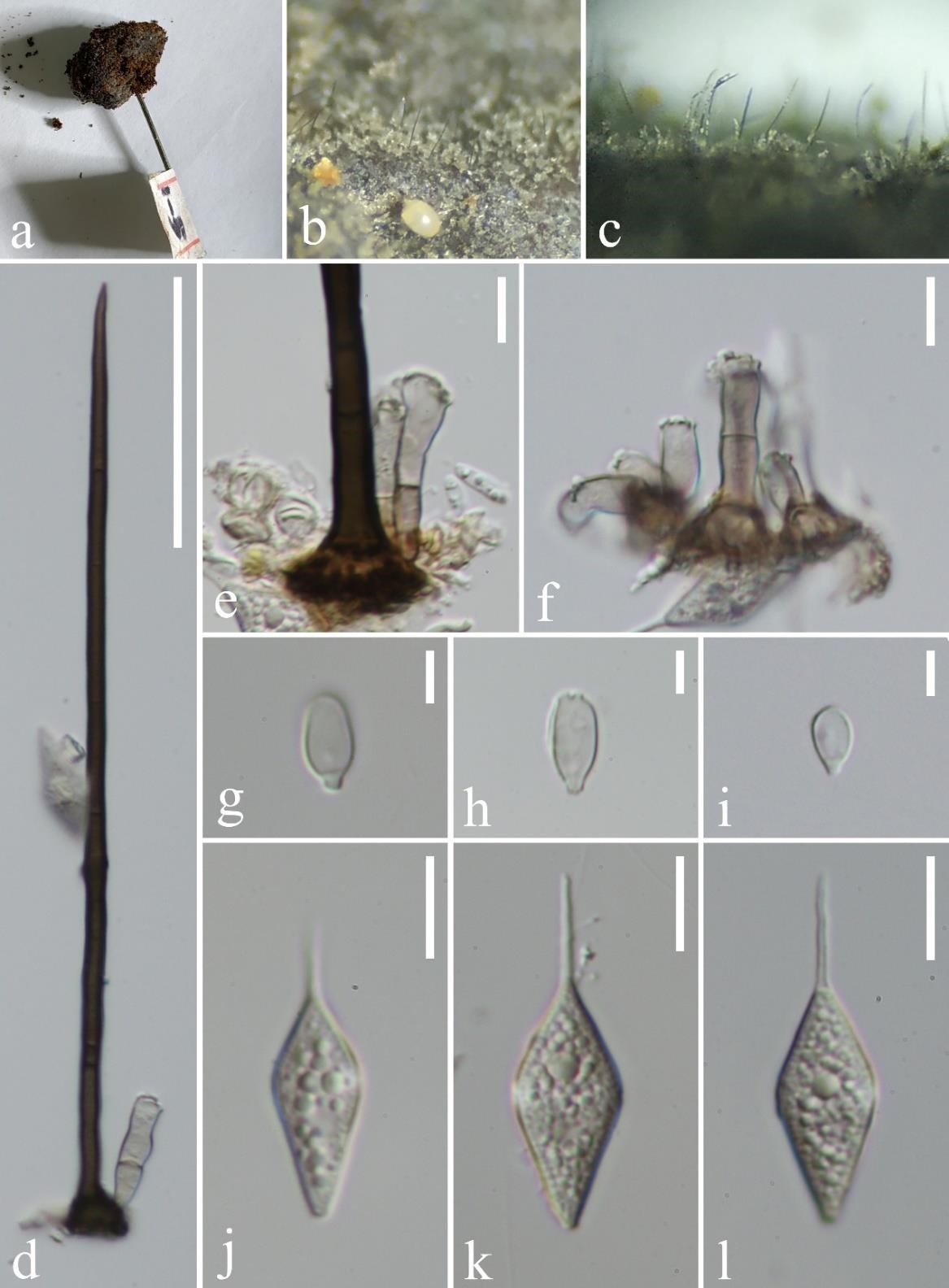
Beltraniella brevis (MFLU 19–2253, paratype). a Host material. b, c Conidiophores on leaf surface. d Setae with short conidiophores. e Imperfect setae with short conidiophores. f, g Conidiogenous cells. h–k Conidia with separating cells. Scale bars: d, e = 20 μm, f–k = 10 μm.


